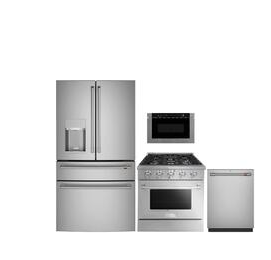Basic tips to organize your food in the fridge

Undoubtedly, each one of us has, at some point in our lives, been surprised by the discovery that food that we had forgotten we had put away in the refrigerator was either no longer edible or had passed its expiration date. The fact that we have no choice but to throw away food is easily the most upsetting aspect of our predicament.
However, there are some strategies that you can use in order to organise your refrigerator, which will allow you to avoid throwing away food that has gone bad and, as a happy side effect, take care of your budget for groceries.
Order from biggest to lowest

Placing the items with the greatest volume in your refrigerator is one strategy for improving its organisation.
Furthermore, it is suggested that you "keep your healthiest meals and snacks in sight at all times." When you feel hungry, it will be much simpler for you to grab a piece of fruit from the bowl than it would be to eat something that isn't as good for you.
Keep the same items together
The trick is to work in groups. Put all of the dairy products and veggies together in the same area if you have more than one of each. Even food that has been left over should be kept together in containers since this "helps keep track of what has to be taken out of the refrigerator each week."
Avoid cross contamination

The refrigerators in large restaurant kitchens are arranged in such a manner as to avoid the spread of germs from one food to another. the bottom. Because of this, you won't have to worry about the smaller items becoming buried behind the larger ones, and you'll be able to keep track of everything in your collection with just a quick look.
For instance, they never leave raw meat in a compartment on top of another food in order to prevent any liquid from leaking out of the raw meat and contaminating the rest of the food that is getting ready to be served. This is done for the same reason that they never leave raw meat in a compartment on top of other food. Because of this, the food that has already been cooked is often stored on the top shelf of the refrigerator, and the various cuts of meat are organised according to the amount of time it takes to prepare them.
What to keep in each drawer?

Upper shelves
This compartment of the refrigerator is ideal for keeping "meal leftovers, beverages, and ready-to-eat goods, such as yogurt, cheese, and deli meats," among other things.
Lower shelves
On the same website, they provide the following recommendation: "The best thing to do is to keep here the raw ingredients that you will need to cook." In addition, they verify that this area is suitable for leaving meat in and that its juices will not leak onto other foods while it is being stored here.
Door ledges
This is the part of the refrigerator that is the warmest. Because of this feature, it is an excellent location for storing condiments. They advise that you should avoid the common mistake of "placing the eggs or milk on the door, as they must go in a cooler portion."
The lower drawers
According to the same source, the purpose of this section is to maintain a certain humidity level for the items, hence fruits and vegetables must be stored there. It goes without saying that you should exercise caution while leaving the defrosted meats on them; ideally, they should be kept entirely distinct from one another at all times.










